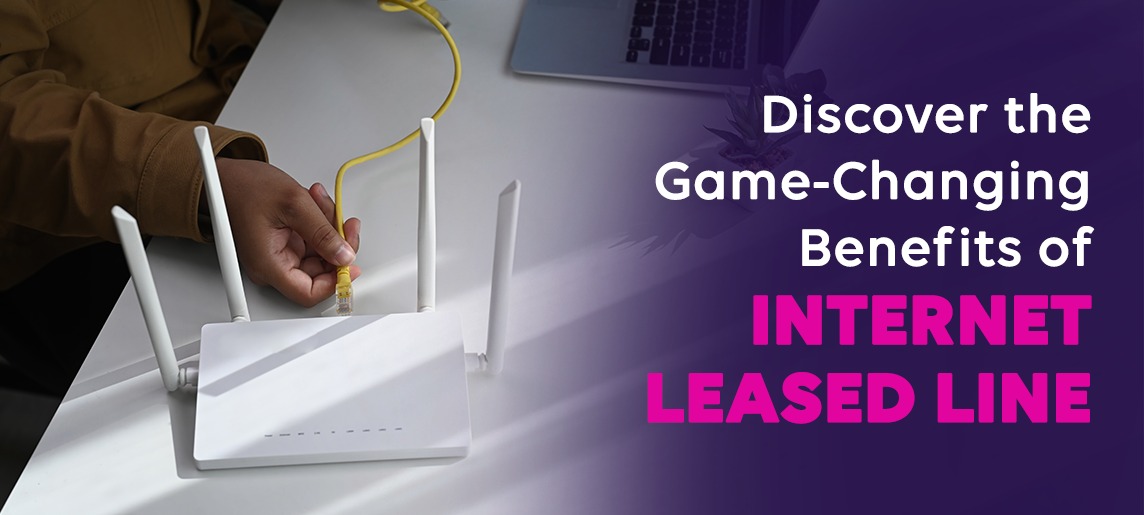In the ever-evolving landscape of internet connectivity, users are often faced with the crucial decision of choosing between Fiber Internet and Digital Subscriber Line (DSL). Both technologies have their merits, but the choice ultimately depends on individual needs and priorities.
In this comprehensive exploration, we will delve into the intricacies of Fiber Internet and DSL, dissecting their architectures, comparing speeds, and evaluating reliability to help you make an informed decision.
Understanding Fiber Optic Cable Internet
Fiber optic cable internet is a revolutionary technology that uses thin strands of glass or plastic to transmit data using pulses of light. This method ensures high-speed, reliable, and consistent connectivity. Fiber optic networks are built on the foundation of these cables, and their efficiency has made them the gold standard for modern internet connections.
Fiber optic cable internet has several advantages over DSL. Firstly, it offers substantially higher bandwidth, allowing for faster data transmission. The use of light signals enables data to travel over long distances without significant loss of speed or quality. Additionally, fiber optic cables are less susceptible to environmental factors and interference, resulting in a more stable connection.
The Significant Advantages of Fiber Optic Networks
Fiber optic networks, the backbone of fiber internet, are designed to deliver exceptional performance. These networks boast lower latency, meaning data travels with minimal delays. This is particularly crucial for activities such as online gaming and video conferencing, where real-time interaction is paramount.
Moreover, the scalability of fiber optic networks allows for seamless upgrades, ensuring that they can accommodate increasing demands for higher speeds and data volumes. This future-proofing aspect makes fiber internet an attractive option for those who anticipate growing connectivity needs.
DSL: The Legacy of Digital Subscriber Line
DSL, or Digital Subscriber Line, is a technology that utilises existing copper telephone lines to provide internet connectivity. While it has been a reliable and widely used option, especially in areas where fiber optics may not be readily available, DSL internet has certain limitations that are worth considering.
DSL broadband operates on the premise of transmitting data over copper lines at different frequencies, allowing users to access the internet without disrupting their telephone service. However, the reliance on ageing infrastructure can result in slower speeds and diminished performance compared to newer technologies like fiber optic cable internet.
One of the critical factors influencing the choice between fiber internet and DSL is speed. Fiber optic cable internet, owing to its advanced technology, consistently delivers higher speeds compared to DSL. While DSL speeds can vary based on factors such as distance from the service provider's central office and the quality of the copper lines, fiber internet typically offers symmetrical speeds, ensuring fast uploads and downloads.
DSL providers often advertise maximum download speeds that may not be achievable for all users, especially those situated farther from the provider's infrastructure. Fiber internet, on the other hand, is renowned for delivering the speeds promised in service plans, offering a more reliable and predictable experience.
Reliability: Fiber Internet vs. DSL
Reliability is a crucial aspect of any internet service, and both fiber and DSL have their strengths and weaknesses in this regard. Fiber optic cable internet shines in terms of reliability due to its resistance to external interferences. Unlike DSL broadband, which can be affected by electromagnetic interference and distance-related signal degradation, fiber optic cables are immune to these issues.
Furthermore, fiber internet is less susceptible to weather-related disruptions. While severe weather conditions can impact any network infrastructure, the durability of fiber optic cables minimises the risk of service outages caused by environmental factors.
DSL internet, while generally reliable, can face challenges in maintaining consistent speeds over long distances. Users located far from the central office may experience slower connections and occasional dropouts. Additionally, the reliance on copper lines exposes DSL services to potential interference from electronic devices and neighbouring cables.
Fiber Internet vs. DSL: A Comparative Analysis
Speed:
- Fiber Internet: Boasts symmetrical high-speed connections with lower latency.
- DSL: Speeds can vary based on distance from the central office and line quality.
Reliability:
- Fiber Internet: Resistant to interference, and weather conditions, and offers consistent performance.
- DSL: Generally reliable, but speeds may fluctuate, especially over long distances.
Infrastructure:
- Fiber Internet: Utilises advanced fiber optic cables, future-proof and scalable.
- DSL: Utilizes existing copper telephone lines, and may face limitations in speed and performance.
Availability:
- Fiber Internet: Increasing availability in urban areas, expanding rapidly.
- DSL: Widely available, especially in areas where fiber may not be accessible.
Cost:
- Fiber Internet: Initially may have a higher installation cost but can offer better value over time.
- DSL: Generally more affordable in terms of initial setup but may lack the long-term value of fiber.
Fiber Internet vs DSL - Making the Decision
The choice of fiber internet vs DSL ultimately depends on your specific needs, location, and budget. If you prioritise high-speed, reliable connectivity with low latency, and are situated in an area with fiber optic infrastructure, fiber internet is likely the superior choice. On the other hand, if you are in a location where fiber is not yet available or if you have budget constraints, DSL internet can still offer a decent level of connectivity.
Before making a decision, consider your current internet usage patterns, the availability of services in your area, and your future connectivity needs. Consulting with local service providers and researching customer reviews can provide valuable insights into the quality of both fiber and DSL services in your region.
Why Choose Tata Play Fiber for Fiber Internet
In the digital era, where connectivity is the lifeblood of our daily activities, choosing the right fiber internet service provider is paramount. Tata Play Fiber emerges as a standout option, offering a myriad of benefits that elevate the internet experience to new heights. Let's explore why Tata Play Fiber is a compelling choice for those seeking reliable, high-speed fiber internet.
Blazing Fast Speeds:
Tata Play Fiber is synonymous with speed. Leveraging cutting-edge fiber optic technology, Tata Play Fiber ensures lightning-fast internet speeds. With symmetrical upload and download speeds, users can enjoy seamless online activities, from streaming high-definition content to engaging in video conferencing without buffering interruptions.
Unrivalled Reliability:
At the core of Tata Play Fiber's appeal is its unwavering reliability. The use of advanced fiber optic cables minimises signal degradation, providing a stable and consistent connection. This reliability is particularly crucial for activities requiring real-time interaction, such as online gaming or video conferencing, where interruptions can be disruptive.
Future-Proof Infrastructure:
Tata Play Fiber stands as a pioneer in future-proofing connectivity. The infrastructure is designed to evolve with technological advancements, ensuring that users have access to the latest innovations without the need for significant upgrades. This forward-thinking approach makes Tata Play Fiber an investment in the future of internet connectivity.
Seamless Streaming and Gaming:
Whether you are an avid gamer or a content streaming enthusiast, Tata Play Fiber delivers an unparalleled experience. Say goodbye to lag and buffering as Tata Play Fiber's high speeds and low latency provide a smooth and immersive experience for both gaming and streaming high-definition content.
Transparent Pricing and Packages:
Tata Play Fiber understands the importance of transparent pricing. The service offers a range of packages to cater to diverse user needs, ensuring that subscribers have access to internet speeds that align with their requirements without breaking the bank.
24/7 Customer Support:
Tata Play Fiber goes the extra mile with its commitment to customer satisfaction. With 24/7 customer support, users can rest assured that assistance is always at hand. Whether troubleshooting technical issues or seeking information about plans and services, Tata Play Fiber's customer support is dedicated to providing a seamless experience.
Tata Play Fiber stands tall as a premier choice for fiber internet, combining exceptional speed, reliability, and forward-thinking infrastructure. As the digital landscape continues to evolve, Tata Play Fiber not only meets the demands of the present but anticipates the needs of the future, making it the go-to option for those who seek more than just an internet connection – they seek an elevated digital experience.
Conclusion
In the ongoing battle between Fiber Internet and DSL, the former emerges as the frontrunner in terms of speed, reliability, and future-proofing. However, the decision ultimately boils down to individual circumstances, and both technologies have their merits. As technology continues to advance, the gap between fiber and DSL is likely to widen, making the former an increasingly attractive option for those seeking the best in internet connectivity.
In the grand scheme of the digital age, choosing the right internet connection is not just a matter of convenience but a crucial step towards unlocking the full potential of the online world. Whether you opt for the high-speed lanes of fiber optic cable internet or navigate the well-trodden paths of DSL, the journey towards seamless connectivity is an exciting one, promising a world of possibilities for work, entertainment, and beyond.





 By Rahul Nambiar | 27th March 2024
By Rahul Nambiar | 27th March 2024

 By Rahul Nambiar | 19th March 2024
By Rahul Nambiar | 19th March 2024
 By Rahul Nambiar | 30th January 2024
By Rahul Nambiar | 30th January 2024